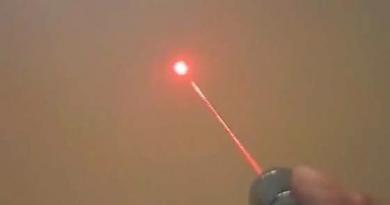If your TV suddenly starts to lead an independent life, it switches channels, modes, sometimes does not respond to the remote control. Then we do the following, see Photo.
Hi all! Contact Vitaly! Not so long ago, I had to “treat” one patient, so to speak, to tame the obstinate. Well, to be more specific, the Samsung LCD TV got out of hand and began to lead an independent, wild life.
He switched operating modes, channels - on his own, and this in every possible way prevented his owner from calm and measured way of life. Sometimes he stopped responding to the remote control at all and, having switched somewhere on his own, did not want to go back to any.
Can something be done in this case? Let's look at the causes and remedies. Forgive me the masters from the service centers, but this is my blog, what I want is what I do ????
The TV itself switches channels, we eliminate the cause with our own hands - photo
If it so happened that the TV stopped listening to you, then there may be at least two reasons for this.
Reason one
Ridiculously simple, the button is stuck in the remote control and it constantly gives some kind of command. For example, increases the volume, or turns on one of the channels. It’s easy to find out, you need to move the remote control away to the next room, or cover it, wrap it up in clothes, for example, or remove the batteries in the end.
If this helped, then the problem is in the remote control, such a malfunction may be the result. For example, foil was glued to the contacts of the rubber bands with super glue, the foil fell off (and sooner or later this will happen) and closed the group of contacts.
But if no one has repaired the remote control, then carefully look at the buttons, especially the one whose command the TV executes, it may have sunk and caught on the edge of the remote control case while remaining pressed. Correct it, this sometimes happens with not very high-quality remotes.
Reason two
Here it is somewhat more complicated, and may manifest itself differently. Firstly, the malfunction may be “Floating”, i.e. it appears and disappears, secondly, switching may not occur to one mode, but to different ones, and sometimes the TV may not respond to the remote control, and it is known to be working.
But if you are determined enough to disassemble the TV, then this information is for you.
Immediately make a reservation that we are talking about LCD TVs with mechanical buttons on the control panel. Touch buttons, those that are drawn, and they do not need to be pressed, but only touched, do not fit here.
So, as you may have guessed, the reason for this behavior of the TV may be hidden in the control buttons. They need to be reached. My example is a Samsung TV.
I will not describe in detail the opening procedure, I will only suggest that it will be possible to unwind and remove the back cover if the TV is placed with the screen down, of course. To do this, it is desirable to lay something on the table allotted for repair. Did you get to the buttons? Now disconnect the wire cable going to the socket with buttons. If after that the TV control functions from the remote control are restored, then this is definitely a problem in the button board.
And in principle, this can be repaired and finished if you are satisfied with controlling the TV only with the remote control. Well, if not, then let's move on!
So, the handkerchief with the buttons was removed from the TV, in my case it is like this, in a plastic case with buttons - pushers.
TV button panel
Usually with buttons there is a problem of the opposite nature, this is when you press it, but there is no reaction. But in our case, everything is reversed, no one presses the button, but it, albeit a little, closes the contacts.
Therefore, the first thing to check is whether it closes because it is pressed by an overly bent plastic pusher. If everything is in order, then we analyze further. Remove from plastic holder. Here's what happened.
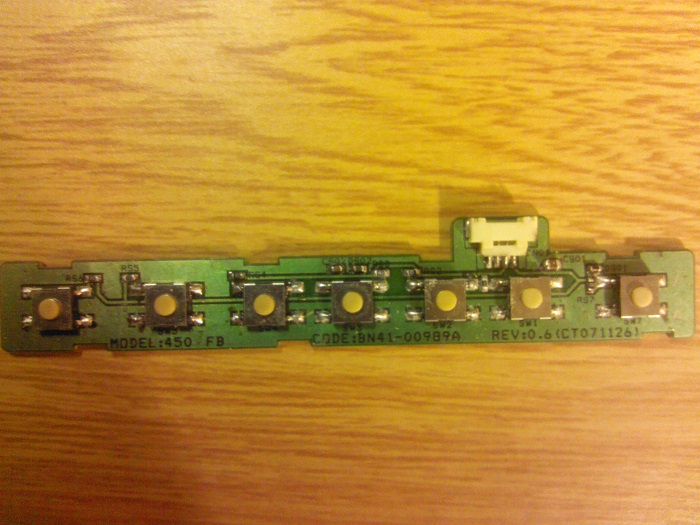
The reason is that oxides are formed inside the buttons and it is not yet clear why, but the result is that the button begins to conduct electricity and for this it does not need to be pressed. The brains of the TV perceive this as pressing a button to turn on a function and, accordingly, work out a command that, in fact, was not there.
I'm not saying that ideal contact is formed in the button under such conditions, the resistance between the button pins can be tens of kilo-ohms and, moreover, it will float significantly. Hence the inclusion of various functions, channels, and so on.
Indeed, in the normal state, the TV determines which command comes from the buttons just by the resistance of the closed circuit, for each command its own resistance. And then suddenly the resistance appears, then disappears, then more, then less, here it is (the TV) and it doesn’t get a clue what to do. And it starts to include everything.
We repair buttons
There are two options, or buy the same buttons and solder them to the board, and it is advisable to replace everything, since it is not always possible to find out exactly which of them behave like hooligans due to the great instability of this breakdown.
Or disassemble the buttons and put them in order. This is not always possible and depends on the type of buttons installed. But in my case it was possible and not difficult action. If you have buttons like in the photo below, then you can easily handle it.
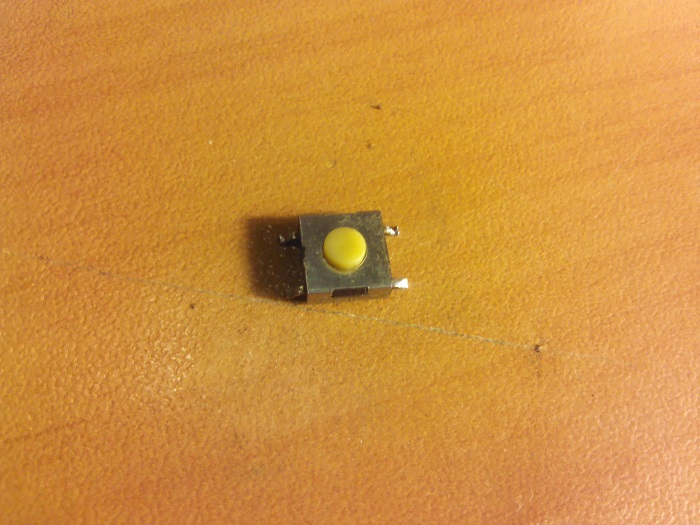
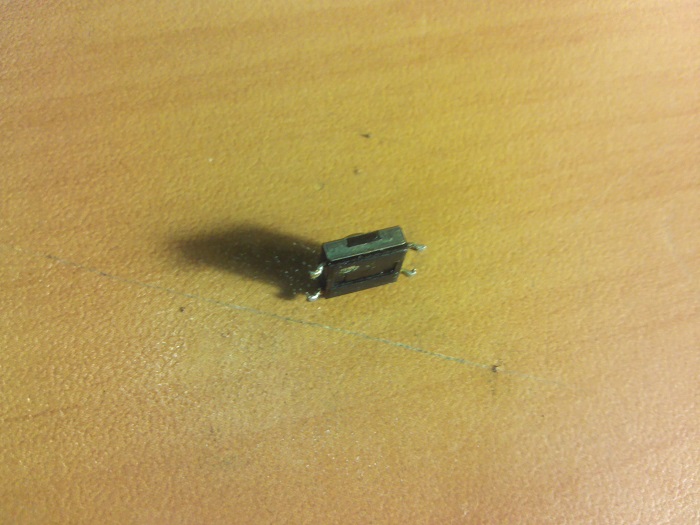
This button is not difficult to disassemble, you just need to pick up the metal part with something sharp and “unfasten” it from the plastic part, while making sure that the insides of the button do not fall out and are not lost. The disassembled button looks like this.
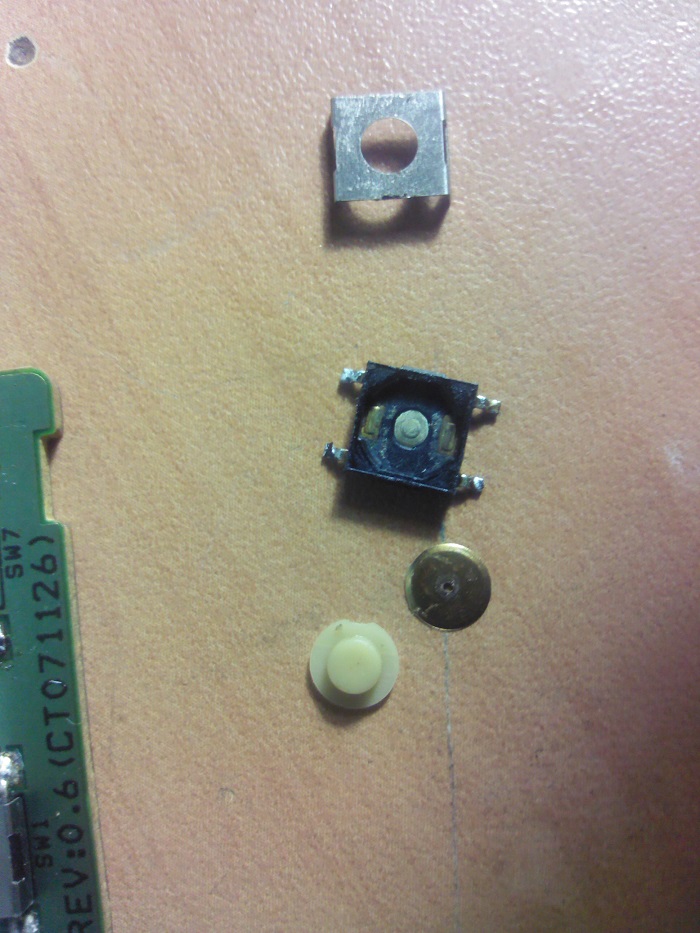
But in order to restore them, it is not even necessary to solder them from scarves. See below.
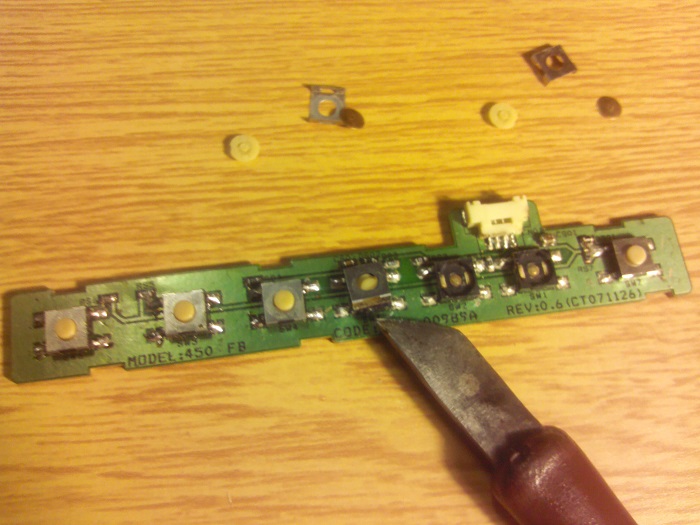
We disassemble and clean everything. To do this, use cotton swabs and alcohol. Maybe an eraser. Motorists can use carburetor cleaner or WD40, just do not need to spray directly from the can onto the board, pour the cleaner into some kind of cap and clean the contacts with a cotton swab. Below you can see that some of the contacts are cleared, and some are not yet. Copper heels can also be rubbed with honey with your fingers. Since we got so deep????
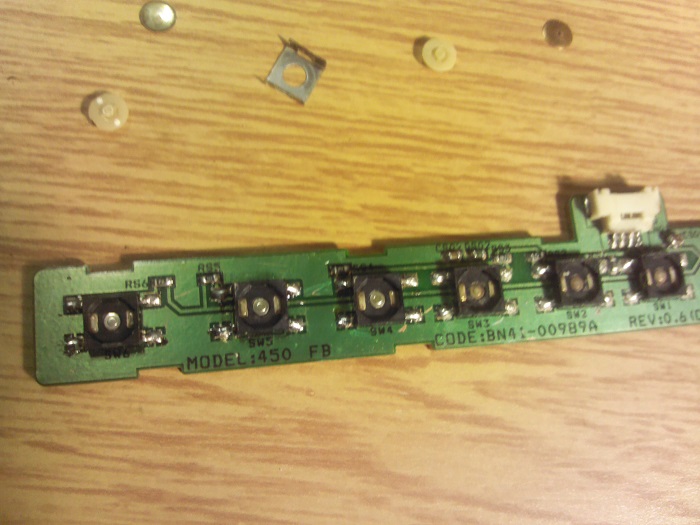
All cleaned up - Collecting! We pay attention to the correct installation of copper heels - with a dome to the top. Serviceable, not hackneyed heels should spring when pressed. After snapping the metal staples manually, you will need to put them in their place by slightly pressing the edge of the tool.
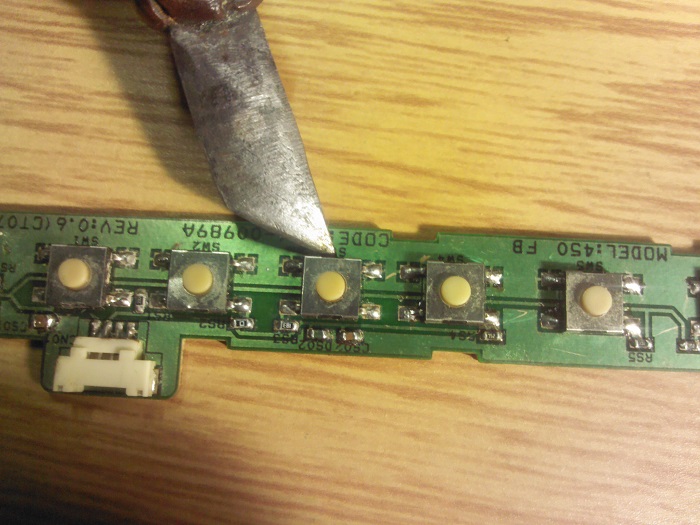
Most often, these measures are enough and you can collect everything for us.
For the savvy
For those who are familiar with the repair of radio equipment more closely and have certain knowledge and skills. Information further.
In my case, the buttons were divided into two groups KEY 1 and KEY2, each with its own wire with a voltage of 3.3 volts. In total, three wires go to the button chip, one is ground and two are for buttons. When the glitch started, the voltage in one of the wires dropped to 1.8 volts and this was without pressing a single button. I did not immediately believe that the buttons give a leak. Since there are ceramic capacitors in the circuit, the suspicion first fell on them, this happens to them, keep this in mind.
But a thorough check showed that in this case the reason is the button leakage. The button can behave quite normally, close when pressed and not be called by the tester in any way if it is not pressed. But as soon as she stays a little energized, a current flows to the ground in it. This can be seen from the voltage drop in one of the circuits, when 3.3 V decreases, TV glitches begin. Sometimes he completely stopped responding to the remote until the button board was disconnected from the circuit.
Well, I hope this information will be useful for those who are faced with a similar problem.


